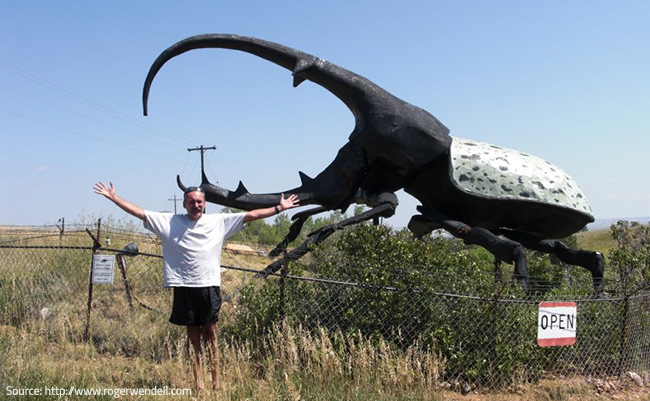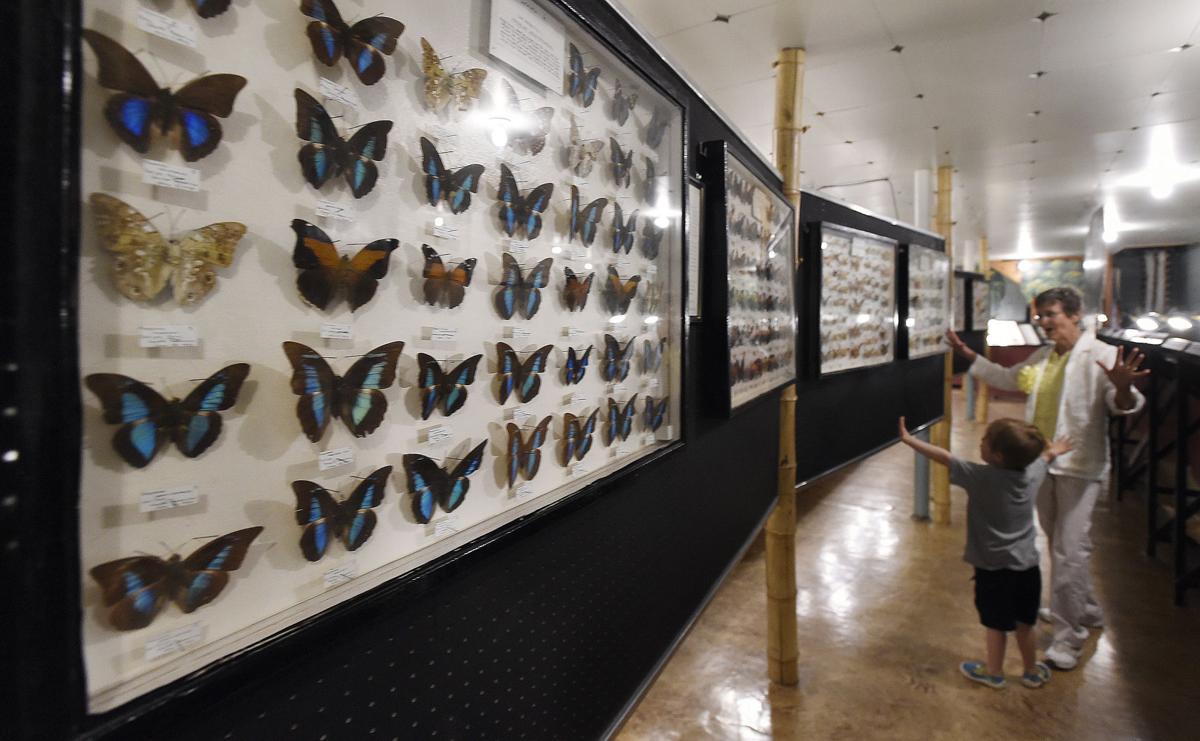
The Bug That Was No Bug: How a Colorado Museum Exhibit Caused a Stir and Sparked a Lesson
In the hushed, climate-controlled halls of the Denver Museum of Nature & Science (DMNS), a sanctuary dedicated to unveiling the mysteries of the natural world, an unexpected drama once unfolded. It wasn’t a rare fossil unearthed, nor a new galaxy discovered, but something far more terrestrial, and in its own way, far more perplexing to the unsuspecting visitor: a bug. Not a digital glitch in an interactive display, but a genuine, six-legged, antenna-waving insect, seemingly loose and enjoying a leisurely stroll across the polished floors, far from its designated exhibit.
The initial sightings were sporadic, whispers among visitors, then hurried reports to staff. A small, mottled brown weevil, an unassuming creature by most standards, had somehow made its way out of its enclosure. For any institution dedicated to the preservation and study of nature, a rogue specimen is a cause for concern. But for the DMNS, renowned for its meticulous care and cutting-edge exhibits, this wasn’t just a minor escape; it was an ironic twist of fate, a literal bug in the system that would quickly turn into a memorable teaching moment.
The creature in question was Diaprepes abbreviatus, more commonly known as the citrus root weevil. To the casual observer, it was just another beetle, perhaps a little out of place. But to the trained eye of an entomologist or anyone familiar with agricultural pests, this particular weevil carries a far more ominous reputation. Native to the Caribbean, Diaprepes abbreviatus is a highly destructive invasive species, notorious for wreaking havoc on citrus groves, ornamental plants, and a wide array of agricultural crops. Its larvae feed voraciously on plant roots, while adults chew on leaves and stems, causing significant economic damage and ecological disruption wherever they establish themselves.

So, why was such a problematic creature housed within the DMNS, a beacon of conservation? The answer lay in a groundbreaking exhibit designed to pull back the curtain on the often-unseen world of museum operations: "Behind the Scenes." This innovative display aimed to educate the public not just about the wonders of the natural world, but also about the intricate, often challenging work involved in studying, preserving, and managing it. Part of this exhibit focused on the critical issue of invasive species – how they are identified, studied, and controlled, and the immense threat they pose to native ecosystems and economies. The citrus root weevil, precisely because of its notoriety, was a perfect, living example.
Curators and educators had carefully selected Diaprepes abbreviatus as a star specimen for its educational value. Housed in a secure, custom-built enclosure, it was meant to illustrate the concept of invasive species in a tangible way, allowing visitors to observe the very creature that costs agricultural industries millions annually. The exhibit detailed its life cycle, its impact, and the methods employed to combat its spread. It was a testament to the museum’s commitment to presenting science not just as a collection of facts, but as a dynamic process with real-world implications.
The irony, then, was palpable when the very subject of the invasive species exhibit decided to stage its own, albeit small-scale, invasion of the museum floor. Reports began trickling in, first from eagle-eyed visitors, then from diligent staff members. "We had a few people approach us, a little concerned, asking if we knew there was a bug on the loose," recalled a museum spokesperson at the time, whose name, for the purposes of this recollection, we’ll call Sarah Jenkins, the museum’s then-Director of Public Relations. "It wasn’t a full-blown panic, but certainly, there was a sense of unease. Nobody wants a ‘bug problem’ in a natural history museum, especially not one known for its meticulous standards."
The museum’s response was swift and methodical, characteristic of an institution accustomed to handling delicate specimens and public inquiries. Security and animal care teams were dispatched. The weevil was quickly identified, its identity confirming the source: the "Behind the Scenes" exhibit. The escape route was promptly discovered – a tiny, almost imperceptible gap, a testament to the weevil’s persistent nature, or perhaps a slight oversight during a routine cleaning.
The immediate priority was containment. The weevil was carefully recaptured, unharmed, and returned to its secure habitat. But the story didn’t end there. The incident, though minor, presented a unique communications challenge and, ultimately, an extraordinary opportunity.
"Our first thought was to reassure everyone that it wasn’t a dangerous situation," Jenkins explained. "This wasn’t a venomous spider or a disease-carrying insect. It was an invasive species we were studying. But then, the humor of it, and the educational potential, really hit us."
The museum decided to lean into the narrative. Instead of downplaying the escape, they embraced it as part of the exhibit’s ongoing story. Signage was updated, and staff were briefed to share the tale with curious visitors. The weevil’s brief foray into freedom became an anecdotal addendum to its own display, a living demonstration of the very challenge the exhibit aimed to highlight: the persistence and adaptability of invasive species.
"It really hammered home the message," said Dr. Evelyn Reed, a lead entomologist at the museum, whose name we use as a placeholder for the expert who would have overseen such an exhibit. "Here we are, talking about how these species can find their way into new environments, how resilient they are, and then poof – one of our star specimens demonstrates it firsthand, right here in the museum. You couldn’t write a better teaching moment."

The story, initially a minor internal incident, began to circulate. Local media, always keen on a quirky human-interest story, picked it up. Headlines ranged from the slightly sensational ("Museum Battles Rogue Bug!") to the more whimsical ("Exhibit Escapes to Explore Museum!"). The public reaction was largely one of amusement and a touch of ironic delight. People chuckled at the image of a museum, dedicated to understanding nature, briefly outsmarted by one of its own subjects.
More importantly, the incident sparked conversations. Visitors who might have passively glanced at the "Invasive Species" display now stopped, intrigued by the story of the escapee. They asked more questions, engaged with the exhibit’s content on a deeper level. The weevil, through its brief bid for freedom, had inadvertently become an even more effective ambassador for its cause.
The "bug that was no bug" became a compelling anecdote, illustrating several key points about museums, education, and our relationship with the natural world:
-
The Power of Tangible Experience: While static displays and interactive screens are valuable, the presence of a living specimen, especially one with a dramatic backstory, creates an unforgettable learning experience. The weevil’s escape transformed an abstract concept into a very real, very relatable event.
-
The Importance of Communication: The museum’s transparency and willingness to share the story, rather than hide it, turned a potential PR blip into a positive narrative. It fostered trust and demonstrated a commitment to honest engagement.
-
The Unpredictability of Nature: Even in a controlled environment, nature finds a way. This served as a subtle reminder of the intricate challenges faced by scientists and conservationists working to understand and manage ecosystems.
-
Challenging Perceptions: For many, insects evoke feelings of fear or disgust. The weevil’s story, infused with a touch of humor and educational context, helped to reframe this perception. It showed that even a "bug" can be a fascinating subject of study and a powerful teacher.
The Colorado Museum bug incident, while perhaps not reaching the notoriety of other museum mishaps, remains a charming testament to the unexpected ways in which learning can occur. It underscores the dynamic relationship between a museum, its collections, and its visitors. The citrus root weevil, once a contained specimen, then a temporary fugitive, ultimately fulfilled its educational purpose in a way its curators could never have predicted. It became a living, breathing, albeit briefly free, example of the very issues the Denver Museum of Nature & Science strives to illuminate, proving that sometimes, the most effective lessons are the ones that wander off script.


